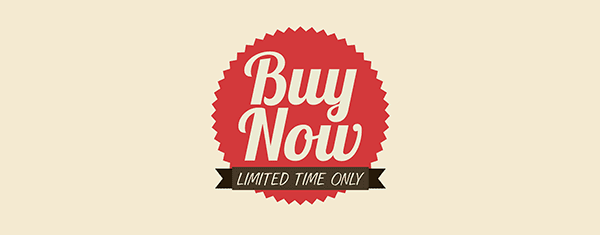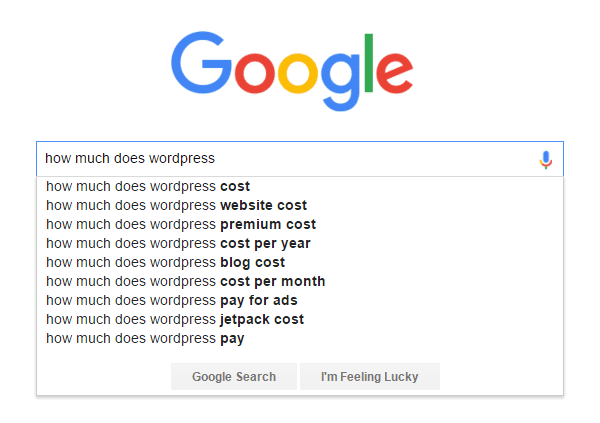Whether you want to attract more clients to your freelance service or business, drive more customers to your store, or just build a bigger audience for your blog, it’s vital that you understand the essential skills that every blogger needs.
In the past, we’ve published a few articles on this blog about the benefits of content marketing and how to grow your WordPress business through better blogging. However, in today’s article we’re going to cover some of the essential skills almost everyone needs in order to find success online.
Even if you aren’t writing the content yourself, it’s important to have a good understanding of what good content looks like. This knowledge will help you to recognize whether someone is a good writer for your blog or not. It will also enable you to determine if the work they do for you is up to standard.
Whether you’re already involved in the growing WordPress economy, or you’re looking for a way in, blogging can be a great entry point. Having a busy blog can also help accelerate the sales of your WordPress-related products and services.
So whether you’re totally new to blogging or you just want to brush up on your skills, here is the essential knowledge that every blogger needs in order to grow their audience. Whether you want that audience to go on to become customers, clients, or your join your network, these tips will help you get the best results from your efforts.
1. Know Who You’re Writing For

Know your audience – image by Anna Frajtova / shutterstock.com
Whether you’re a freelancer in need of a steady stream of new prospects or a business looking for more customers, I hope that you already have a good idea of who your ideal client or customer is. This persona is who you will be writing your blog content for.
However, if you’re blogging to build a reputation, grow an audience, or cultivate a following, you might not have given as much thought to the topic of who your ideal reader is.
Creating a Reader Profile
The more specific and detailed you can get when it comes to creating the profile of your ideal reader, the more focused your content will be. As your content becomes more zoomed in on your ideal reader, the more it will resonate with them, offer real value, and help turn them from a one-time visitor into a subscriber or follower.
Find Your Niche

Find your slice of the market – image by BoBaa22 / shutterstock.com
When it comes to determining who you’re writing for and what your ideal reader looks like, niching down as much as possible is the goal here. If you want your blog to serve WordPress users, for example, what type of WordPress user do you want to attract?
Are these WordPress users:
- Coders
- Web designers
- Hobbyist users
- Blog owners
- E-commerce store managers
Then there are the other things to think about, such as their location, their age, whether they are an Apple or PC person, if they prefer cats to dogs, if they value time over money or prefer to invest their time and learn how to do the job themselves, the list goes on…
Overcome the Resistance
I’m sure in your field, you can niche down more than you have already. However, you might be resistant to niching down as much as is necessary. This is understandable. You don’t want to turn away potential readers or customers who fall outside of your laser focused target demographic.
However, being specific about who your target reader or customer is doesn’t mean excluding everyone else. It just means that when your ideal prospect comes along, they will instantly connect with what you have to say.
Instead of leading with a bland message, in the hope of not turning anyone away, do the opposite. Really refine your voice to ensure your target audience simply can’t turn away.
Furthermore, the better you’re able to flesh out the persona of your ideal client, customer, or reader, the easier it will be each time it comes to sitting down and writing a new blog post.
2. What Action Do you Want Them to Take?

Define your goals – image by T-Kot / shutterstock.com
Armed with your ideal reader profile, it’s almost time to start writing. However, before you do, there are a few more points you need to be aware of.
The next task is to determine what you want your visitors to do after they’ve found their way to your blog and started reading your content.
What Are Your Goals?

What’s the next step in the journey? – image by Titov Nikolai / shutterstock.com
If you’re blogging purely for businesses reasons, then you should already have an idea of this. For those who are blogging to grow their business, the next action typically could include deciding to become one of your clients or customers. While for bloggers with less tangible goals, such as growing an audience or building a platform, the desired next step in the visitor journey might not be as clear.
However, even for business owners and entrepreneurs, the next step in the client or customer acquisition journey won’t always be the same. If you are promoting low-ticket products or services, then yes, the desired action you want your reader to take is to add the item to their cart and make a purchase.
Don’t Just Shove Your Offer in Their Face

Don’t try to cold sell – image by gst / shutterstock.com
However, if you are promoting high-priced items, such as high-end web design projects, online training courses, or big-ticket products like a car, simply presenting visitors with the opportunity to make a purchase often isn’t the best approach.
Start a Relationship or Qualify Your Leads

Evaluate your leads – image by Axsimen / shutterstock.com
The higher the price of the item you are offering, the more you’ll have to do to warm up your prospects before asking them to make a buying decision.
One way of achieving this is to ask your visitors to complete some other action that will help you to either qualify them or start building a relationship with them.
If you’re a web designer, but only want to work on projects in the $20,000 to $50,000 price range, then you need to qualify your leads as quickly as possible to exclude tire kickers and projects with a budget outside of that range.
A detailed online form that asks essential questions can help you to quickly filter out unsuitable leads. Another example would be scheduling an appointment for an investigatory call as soon as possible to see how serious the prospect is.
If you are offering high-priced products that typically aren’t purchased online, then the next step in the buying journey might be to arrange a live viewing or test drive, or to seek permission to send out an information pack.
For those of you offering high priced training courses or coaching programs, you ideally want your visitors to sign up to your email list as the next step towards your final goal. This then gives you the opportunity to connect with them through a free series of emails, before presenting them with the opportunity to sign on the dotted line.
Using a free email course as a lead magnet, can help you start a relationship rather than have a request for money being your first point of contact.
If you aren’t in it for the money, and are blogging to build your audience or for some other reason, then you’ll still want your readers to take an action after they’ve read your content. This could include asking them to join your email newsletter, become a follower on social media, or some other action that gives you a way to keep in contact with them.
If you really think about it, each project has its own individual acquisition journey – whether you want to acquire a new customer, client, or follower. Knowing what action you want your visitors to take next will help ensure your blog content is aligned with that goal.
3. How Can You Help?

Help your audience through your content – image by Ingka D. Jiw / shutterstock.com
Ok, so now we know who we’re writing for and what the purpose of our blog, it’s time to fill in the missing gap: establishing how to best help or serve your audience.
If you want to get your visitors to take the next step in the journey you’ve mapped out for them, you’ll need to give them something in return. What your visitors are looking for here is value.
This value could come in many forms. This includes more literal interpretations of value such as helping them to save money or generate more revenue.
Alternately, if could just be providing entertainment, information, or a welcome distraction from what they should be focusing on instead.
We all find value in different places. As you’ve already created a detailed reader profile, you should be able to determine what value your audience is seeking and how you can provide it.
Once you’ve delivered some form of value, whether it’s advice, inspiration, information, or entertainment, it’ll be much easier for your visitors to accept the offer you’ve laid out for them and take action.
4. What to Write About

Time so start writing – image by CandyDuck / shutterstock.com
So now the moment you’ve been waiting for: it’s time to start writing. But what should you write about?
The best way to get started is, with your detailed reader profile by your side, begin thinking about how you can provide your target audience with valuable content, in a format that they would appreciate.
What Questions Can You Answer

What questions are you asked? – image by Dooder / shutterstock.com
A good place to start is thinking about the questions you can answer. Think about what questions you are often asked by your clients and customers. This can be before, during, and after you’ve made a sale or completed a project. Do your friends and family often ask you for help or advice in certain areas?
These questions and requests often cover the same topics your target audience are searching the internet to find answers for.

What are people asking Google?
Not only will answering these questions on your blog help your content receive traffic from the search engines, but it will also provide real value to your audience. Using your blog to answer these questions, helps remove any doubts they might have about taking the next step in your buying journey.
Examples of this could include:
- How much does X cost?
- What does the process involve?
- Does X work or is it a scam?
- Is X better than Y?
Using your blog to answer the typical questions your audience will have, can help them to overcome any last minute objections they have. This in turn enables them to move forward with confidence.
How You’ve Helped Others

Share your successes – image by iNueng / shutterstock.com
If you want to gain the trust of your audience, you’ll need to demonstrate why they should take you seriously.
If you’re blogging to promote a product or service, then you can use completed projects or examples of your products being used by your customers as inspiration for your blog posts. Instead of simply publishing client or customer feedback and testimonials, interweave that content into blog posts.
Tell the story of how you were able to help. Be sure to include the results the user revived, and how others can benefit from your expertise. This approach can be applied to your web design portfolio too. Don’t just present the finished projects. Instead, explain what the problem was, how you solved it, and what the results have been for the client.
What You’ve Already Accomplished

Tell your stories – image by Bloomua / shutterstock.com
One of the best ways to connect with your readers is through storytelling. If you’re using your blog to promote yourself, create blog posts that share the stories of how you’ve been effective in the past.
Make sure you’re not simply showing off or bragging, but that your stories include actionable advice that your readers get value from.
If you want your visitors to start a relationship with you – whatever your end goal – you must be able to provide real value and demonstrate your credibility.
Essential Blogging Skills Final Thoughts
Embracing blogging can be the start of an exciting journey. Creating your own content that is published online for the world to see can be nerve racking.
However, if you stick with it, your blog can open up many doors and opportunities that just wouldn’t have occurred otherwise. From new relationships, greater business growth, and countless other opportunities, the benefits of blogging are numerous.
When it comes to putting virtual pen to paper, your blog posts can take almost any form, from list posts and interviews, through to case studies and tutorials. This level of freedom on offer can at first, seem daunting.
Although there really are no hard and fast rules as to how your content should read or look, there are a few blogging guidelines you can use to get started. After that, you can start thinking about finding your true voice and getting more creative with your content.
Blogging can take up a large amount of time, especially if you’re more invested in the other tasks of your business. However, by understating who you are writing for, what your goals are, and knowing what to write about, you can become a much more productive blogger. And if it all seems like too much work, there are plenty of freelance bloggers out there, standing by to take over the writing duties.
Will this advice help you get better at blogging and make your blog more effective? What areas of blogging are you struggling with? Have you been able to create a reader profile and has it helped with your content creation and conversion rates? Please share your thoughts and questions in the comments below.
Article thumbnail image by Max Griboedov / shutterstock.com









I read this not from a business standpoint, exactly, but from trying to build a movement through online activism. Some of the article didn’t exactly fit, but it got me thinking about fine-tuning my approach, specifically the personnas idea and the “what exactly do you want them to do” question.
Might be interesting to reframe the article for those of us who are blogging out of passion or interest and want to find others to join us.
Thanks for the article. Bookmarked.
Some interesting tips. I would insist on “Knowing who do you write for”. It’s essential to know and understand your audience in order to provide the content they are looking for.
Yes yes yes! Blogging and content marketing are so important to running a successful business. So PLEASE PLEASE PLEASE Nick Roach can you make the Blogging Module on Divi as kickass as it is on Extra. I wait with hopeful anticipation ……..
I’m really not familiar with the Extra blog posting modules, but you do know you can build posts using the Divi builder, right? Pretty kickass already.
“Don’t just shove your offer in their face…”
Sorry, this one is too easy – your site by far has the most frequent, and thus annoying, popups. On a visit to your site, I can have a half dozen popups to sign up for your newsletter and get a discount – a real turn off especially since I already do. Sorry, I love your blog, love your site, love your themes and am a dev subscriber, but those popups need to calm down. Thanks,
Drew
In the context of the article he is talking about not shoving highly priced products in people’s faces. It is true that we use a our bloom plugin to serve popups on this site, however we are offering easy access to deals, freebies and quality blog posts like this one. We are not asking people to purchase a lifetime membership with it.
@Nathan, I was expecting to read your reply and see some level of understanding about how annoying your site pop-ups are, but instead you make excuses for it. If your content is truly that good (and it is) and if your plugins are great (and they are) people will find the subscribe and buy buttons. You don’t need to be shoving it in their face. The price isn’t what annoys us, its the fact that there is a popup.
I understand your frustration with popups Scott but since implementing it we’ve seen an increase in our subscriber rate by something like 6000%. So as much as I’d prefer not to use one, clearly they are far more effective than not. And when our content costs us thousands of dollars per week to produce we need to see a return on investment in the form of email subscriptions and/or purchases. These are not excuses they are the simple facts.
You can have popups and still make money without the hugely frustrating amount ET uses here.
Use Exit Intent, and use cookies. I still can’t believe any site uses pop-ups and doesn’t implement a solid cookie tactic.
From a UX point of view, ET is one of the least user-friendly blogs around. You don;t have notifications of replies to comments, and you bombard people with intrusive CTAs (even when they’re already existing subs, or repeat visitors).
Which is a shame, as you often have really useful content on here. But, personally, I’m loathe to come over, because I know how poor an experience it will be.
I have to agree here. You have such a well written and useful blog that I like to visit frequently, but to be so constantly inundated with messages urging me to do something I’ve already done, and can’t do again (since I’m a lifetime member) is beyond being merely irritating. Isn’t there some way you can make the pop-ups stop or change to something relevant once we’re logged in? Once I’m logged on an clearly recognized, why am I still being hit with enticements to join? It doesn’t make sense. It also comes off either as bad planning or as if once we’re members you don’t care so much about our user experience here.
I agree with you on this drew. I can umderstand if its a potential client coming to your site for the first time. To help drive sales. But i already own divi, so offeri g it at a cheaper price is pointless and the popups get annoying. Maybe this is something elegant themes could look into.
+1
Hello,
blogging is one of the most important marketing action for any kind of business. Read many articles can give ideas to write on our own blog.
Thank you, bye
Great post Joe, At the same time I think passion is one of the most important factor to drive you in long way. However I am writing good, traffic is good but If I am not passionate about what I am writing then I don’t think I’ll be able to make it for long run.
I’ve seen new bloggers who either start blogging for money, or do it for passion. Money oriented approach is having very less chances to go longer because it takes time to make regular traffic base which is converting well.
If we leave exceptional cases then its really tough to make any blog, content popular overnight. So it always about writing style and time.
What do you say?
Yes passion will help you get through the lean times at the beginning and is important.
However, passions often fade so you need to be sure there are some other reasons for blogging – such as more clients, better sales, etc.
Good points.
Very true. Passions and hobbies can lose their “joy factor” after a period of time after the business element is blended into the mix.
Thanks for you article. The notion of asking readers to take incremental actions is something I will use.
Well thoughout and in-depth article. Interacting with reader is key in building a loyal readership and building a community
I have realized how important are unique and good written posts. Because of that, my english sites are updated with eng native writers. Google and visitors appreciate that